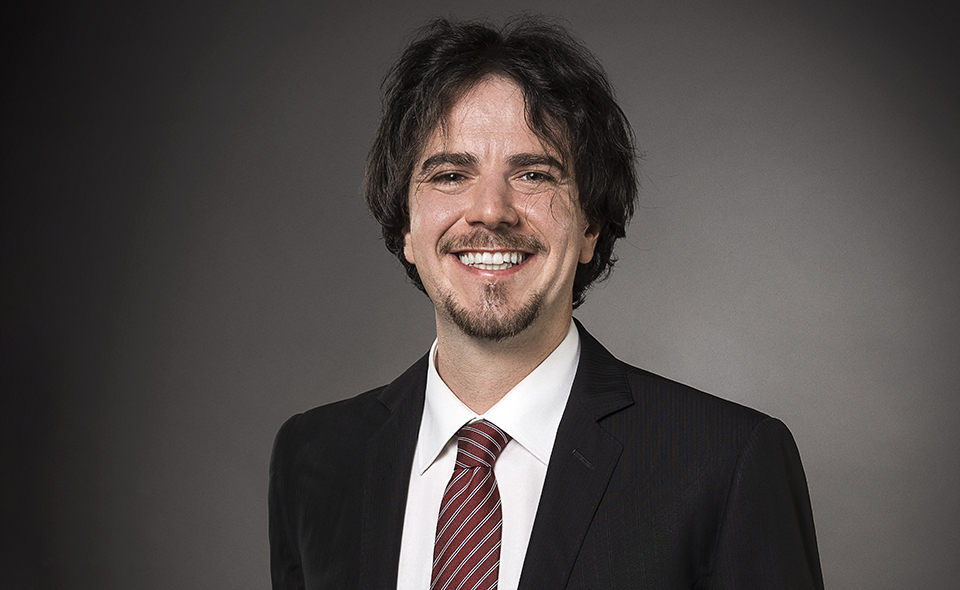Is it possible that law will see a repeat of the seismic user-centric shift that allowed leading tech companies like Amazon and Netflix to dominate the market? Marco shares his opinion on this, and other insights, below.
For the benefit of our readers who may not have met you yet, please tell us a little about your background.
Hi everyone, and thanks for having me here. My name is Marco, and I am an Italian lawyer and the head of innovation at LCA, a leading Italian law firm. My background is a little peculiar. I graduated from Bologna University Law School before starting my career as copyright and entertainment lawyer for a boutique Italian firm. After several years of practice and a number of relevant experiences abroad, I decided to make a career shift, first taking a gap year to do my LLM, graduating from Harvard School as a Fulbright scholar, and later starting at LCA as the first head of innovation for law firms in Italy.
What prompted this career shift?
My background in copyright – and my background as a musician – told me that the law firm world would soon undergowhat happened in the music industry in 1999, when Napster came out. 1999 was a record year for the music industry, but thanks to the emergence of peer-to-peer platforms, consumers started perceiving the value of recorded music in a different way, and artists had to change their business model in order to survive. Even now, after more than 20 years and the rise of social media and streaming platforms, data show us that people tend to pay not for recorded music, but for playlists and the services. This means that the 1999 value change was permanent.
Well, I believe that the law firm world is facing something similar. Maybe we will not offer our services for free, but tech is posing some serious threats (or challenges) in terms of monetisation and perception of added value arising from our services. Plus, we might find interesting additional revenue streams in lateral activities and dedicated business units.
Coming back to my work several years after that career shift, and having experienced both expected elements (investments in contract automation, the rise of legal tech, the impact of sustainability) and unexpected ones (the pandemic, the new normal, etc), I am quite glad I took that risk.
What does a head of innovation do in a law firm?
This is a very interesting question, especially because there is not a one-size-fits-all answer. In the most renowned academic article about chief innovation officers (CINOs) in law firms, indeed, Michele de Stefano points out what everyone in the field knows: CINOs do different things, have different backgrounds and teams, manage different budgets and reach different goals, because they represent how innovation is driven in a specific law firm. Sometimes they work on legal tech products, sometimes on their implementation, and sometimes they are more into trends and market analysis.
I would also stress that innovation is much more than having a head dedicated to the role – like having a chief sustainability officer does not mean that your law firm is sustainable, having a CINO does not mean that your firm is innovative. It takes much more than that.
You often speak about “innovability” and not innovation. Could you tell us why?
I believe that innovation and sustainability are strictly related, and they represent a perfect match. Something like bread and butter, beer and pretzels, or – for Italians like me – pasta and ragù. Without innovation, a law firm cannot be sustainable; without sustainability, there is no law firm at all. I also frequently stress that if we look at the etymology of the word “innovation”, we can notice that it comes from the Latin in and novare. This means that the root of innovation is looking at things from a new perspective, and (more importantly) that tech is not included. So I believe that innovation should be considered in a broad way, including sustainability, which is – quoting LCA’s managing partner – “the key to guaranteeing the intergenerational survival of the law firm, its identity, and its welfare system, so that it goes beyond the lifetime of its founders and maintains the same professional mission”.
Maybe we will not offer our services for free, but tech is posing some serious threats (or challenges) in terms of monetisation and perception of added value arising from our services.
What are the experiences of LCA in terms of innovability?
We are very committed in highlighting that innovability means innovation of thought. For example, we are among the first in Italy to decide to release a social report, which includes our strategy regarding ESGs, but also takes into account several other aspects (innovation, governance, pro bono, etc). Another major step we are taking, thanks to the huge effort of a dedicated team of lawyers, is becoming the first Italian law firm certified for gender equality. We created a venture capital through which we invest in start-ups and established a small office inside H-Farm, the most important Italian incubator. In the Genova office, developers and engineers work together to create legal tech products. The first one is an AI-based, NLP-driven search engine platform for internal documents. We have also offered to our clients the registration of IP assets on a blockchain bitcoin protocol. As you can imagine, I could go on.
That said, and apart from our achievements, we believe that innovability is a matter of human relationships. For this reason, we endeavour to focus on our growth as humans, and not only as professionals. For a young associate, this could mean creating his or her individual career path; for a lawyer with more experience, it could mean incentivising cross-selling and collaborating with a different number of professionals. For a partner, it could be listening and involving the younger generations so that they can have a greater impact and purpose, as well as accountability for their actions.
Regarding the latter, I would also stress that we try to invest as much as possible in feedback (in both senses) and bottom-up proposals from each member of the firm, whether professionals or PSLs. In an environment which is, by nature, strictly hierarchical, it is a small revolution on its own.
What are the main challenges you currently face in your role?
Being a lawyer by background but doing a different job from those of most of my peers, I believe that the biggest struggle is in the way my role is perceived. For the firm, how can I sell myself as a value and not a cost (or even an asset)? For the clients, how can I use my skills to make them more satisfied in our services? For the professionals, how can I involve them in my projects without affecting their daily (aka billable) duties?
The challenge becomes greater once we shift from tangible to intangible effects. The more an innovation is visionary, the less it is quantifiable in terms of KPIs and ROIs – and the less that is quantifiable in KPIs and ROIs, the harder it is to ask for investments, which not only take into account the monetary part, but also the effort and the commitment of the various professionals involved.
That said, I love challenges and I am a gritty-by-nature professional, so my glass is always half-full.
You have developed significant experience regarding legal design. Can you tell us more about this?
Legal design is a wonderful, unique discipline, which can be defined as the design of legal documents in a user-centric way. This means trying to bring into the legal world the mentality that made successful companies like Uber, Amazon and Netflix by starting from the final user and going backwards.
I believe that innovation and sustainability are strictly related, and they represent a perfect match.
I am very proud in saying that at LCA we are pioneers at an international level, and that I wrote, together with Barbara de Muro, the first Italian book on the matter. In the last few years, we also collaborated with the B Corp Mondora (one of our clients) to create “Design Rights”, the first Italian provider of legal design products, consulting and workshops that counts on the expertise of lawyers, but also graphic designers, design thinkers, psychologists and economists. In the last few years we worked with institutions and multinationals in the fields of telecommunications, food, pharma, banking, insurance etc.
Although I could speak for hours about legal design, I would stress that its values are even more relevant: diversity of views, inclusivity, MVP-based approach, involvement of the clients, feedback obsession… if the wheels spin, it could represent a Copernican revolution for the legal business. Plus, it is innovation at its core!
Do you think that legal design will represent the evolution of the legal profession?
That is an interesting question. Legal design is undeniably influencing the way lawyers are exercising their profession, because the idea of having a non-hierarchical, client-centric, MVP-based mindset certainly changes the way we practice. On the other hand, we are still at the embryonic phase of a movement; the examples are still few in number, and there is no agreement – at a market or academic level – regarding either what legal design is or the existence of a common framework.
This can have serious consequences on a practical level, because if we think that each lawyer can be a legal designer (maybe because of their experiences with software like Miro or Canva) or if we say that legal design requires, by its nature, the presence of different professionals at the table, it is a very different scenario. Another example could be related to the similarities between visual law and legal design. If we think that legal design is just a bunch of infographics, some colours and the use of a specific tone of voice, or if we say that it is a method which involves steps, a co-creation process and a total focus on the final user, it is a very different story.
I have my opinion on that, but one thing is clear irrespective of my thoughts: if we choose a more purist approach, the number of practitioners will be lower and the time to spread the seeds will be greater. If we choose the other way around, we could have a stronger impact in the short term but damage the core and the perception of the discipline.
That said, the new normal is bringing more attention to clients, consumers and users, and legal design is certainly a useful tool to strengthen the relationship with them. Furthermore, it is related to several SDGs of the UN 2030 Paris agenda. We tend to consider sustainability in terms of environment and diversity, but what about internal and external communication?
Legal design is a wonderful, unique discipline, which can be defined as the design of legal documents in a user-centric way.
Considering your expertise, what do you think are the main challenges for practitioners of the legal profession?
I believe that this is an exciting moment to be a lawyer. In addition to rising demand, the new normal is posing several legal challenges; clients tend to perceive us more as business and legal advisors and less as service providers.
However, striking the right balance is tricky. We are asked to provide complex legal advice, in a short amount of time, with integrated teams. Sometimes we are also asked “unusual” requests (such as data breach interventions, ESG ratings or AML documentations). This means having dedicated and organised resources, being prepared to handle different types of requests, and working tirelessly on the chemistry between different professionals and departments.
I would also stress that big law in general is facing several major threats, such as the impact of the Big Four, the rise of legal tech and the commoditisation of specific tasks, the increasing power and number of in-house counsels, and the war for talent. Someone could also say that the pyramid structure, the hierarchical approach, and the billable hours requirements are going to change quite soon. Once we realise all of this, it is a personal choice to be frightened or excited.
How do you see the legal innovation scenario?
If we look at data, there are rising and significant investments in legal tech. Plus, law firms are becoming more sensitive to the concept that, in the future, it will not be a matter of being a tech lawyer or not, but a matter of using tech in a good or bad way. That said, I still notice – at a global level – an excess of focus on results and less attention to the cultural element, which is necessary to foster innovation in a specific environment.
I believe effort is necessary from both parties. On the legal innovators’ side, we need to accept that change in law firms is very slow and painstaking. On the law firms’ side, it means adopting a true R&D approach, which is based on repeated failures. Lawyers’ tendency to be risk-averse forces them to make each project sustainable and profitable, but innovation is a different matter.
What are your three suggestions to legal professionals worldwide for promoting innovation?
Sometimes we think about innovation in grand terms, but I do not think of law firms as innovation centres. If I want open innovation, I go to a software company. If I want fresh and dynamic approach to complex challenges, I go to a start-up. On the other hand, I believe that a law firm can be 10% or 20% more innovative than its competitors. That lawyers can be 10% or 20% happier, more collaborative, more inclusive. That clients can be 10% or 20% more satisfied in our services. And if we reach 30%, we could already represent a new business model.
[ymal]
Another suggestion would be involving clients more. While every law firm’s website and brochure mentions client care as a core element, I still struggle to notice serious, tangible efforts from most of them – I mean in terms of surveys, feedback forms and projects developed together. My opinion is that if we consider clients are our biggest value source, then we should invest in knowing them better.
The third suggestion would be spending some time looking at the future, whether in terms of new challenges and new jobs, or simply looking at the curve of exponential innovation. Lawyers and clients of tomorrow are making videos on TikTok, have different value sources, perceptions and paradigms and face challenges in a different way. We cannot be indifferent to these trends. The only chance we have to ride the wave is in embracing them.
In addition to the above, what suggestions would you give to legal innovators?
The first one should be to empathise with lawyers and in-house counsels. Most of them have stressful lives, hectic agendas and demanding tasks to cope with.
The second is to surround yourself with great minds and different backgrounds. Sometimes the trick is not being a good lawyer or a good innovator, but in being in the right place at the right time. Contest matters.
Last but not least, stop choosing the “best possible option” and start choosing the “least possible evil”. It changed my life as lawyer, and it is a powerful asset if used properly.
Marco Imperiale, Head of Innovation
Via della Moscova 18, 20121 Milano MI, Italy
Marco Imperiale is a lawyer and the head of innovation at LCA, a leading Italian law firm. He has extensive experience in legal design, legal tech and the interplay of copyright law and the entertainment industry. Whenever he finds time, he also works as teaching fellow for Harvard Law School (CopyrightX course) and as a mindfulness trainer. Marco is passionate about innovation in its broader meaning, and he is the author (together with Barbara de Muro) of the first Italian book on legal design, published by Giuffré Francis Lefebvre.
LCA Studio Legale is an independent, full-service law firm that specialises in providing legal assistance to companies worldwide. From its offices in Italy and the United Arab Emirates, LCA’s team of almost 200 professionals works to drive innovation and sustainability in the business world.





















